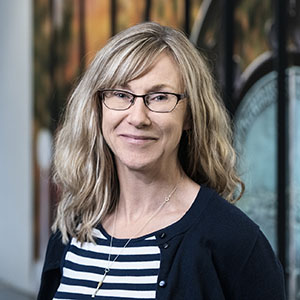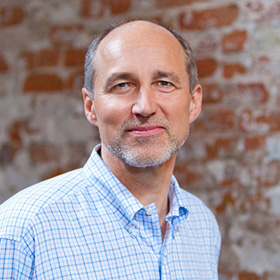When Kevin Frey, then running the MBA program at the Rotman School of Management in Toronto, polled his business school colleagues about taking over the top job at international nonprofit Right to Play, their opinion was unanimous: Don't do it. Their reasoning: This wasn't just any NGO CEO position, it was one that would work alongside the original founder, Johann Koss.
As his Rotman colleagues took pains to point out: "Founder-CEO transitions—where the founders are still on the board, and where they are active in the organization—end poorly," Frey says. "And they were able to draw on decades worth of their own personal experiences and research to back it up."
But from the point of view of the Right to Play board, keeping Koss in the mix made a lot of sense. Funders tend to fund leaders, more than the organization, and there was certainly merit in trying to figure out how to let Koss transition out of the day-to-day while finding someone who could lead the implementation of the strategic plan and the organization's operations.
Founder readiness
Long story short, the change did work out, and very well. Why? For starters, Koss was ready for a new role in the organization. Over 15 years, he'd built Right to Play into an organization serving 18 countries, with an annual budget of $60 million, an international staff of more than 600, and 14,900 local volunteers. The four-time Norwegian Olympic gold-medalist in speed skating was passionate about using the transformative power of play to teach children life skills that help them overcome the effects of poverty, conflict, and disease.
Eventually, Koss came to two decisions. First, that he was feeling the need to make a change, to "use my skills in another environment." And, that "if you practice delivering power to other people, and accept that you aren't always going to be right, then it's easier."
From the point of view of a founder, not dropping the baton takes careful pre-succession planning, says Koss. "Conventional wisdom is, 'Get rid of the founder and hope for the best.' But we thought, what needs to be in place?" He calls this developing a "readiness for transition." A lot of this process is extremely personal. Koss had to ask himself: "Am I emotionally and psychologically in a place to turn this [organization] over?"
Once he knew he was ready, the board stepped in, offering full support in the transition process. Most notable were the structural supports like executive coaching and a clear list of responsibilities and turf allocations that Right to Play's charismatic Founder Koss and his successor Frey call their "Magna Carta." And the secret sauce to making it all work were a number of human traits like respect, trust, chemistry, and open communication.
Dividing responsibilities; defining conflict resolution
The most important part of Koss's transition process with Frey was defining a conflict—resolution approach before Frey arrived, which escalated decision making where Koss and Frey disagreed to the board chair, then the HR committee, and finally the full board. Koss's board hired a personal coach to air differences in a structured, positive way, meeting each month with each of them separately, as well as jointly. "We had the coach in place for individual and joint meetings for the first six months," Koss says. "But we never had an issue go to the board. Everything came back to our own decision making and communication."
Another precursor of a strong working relationship, Frey says, came from "one piece of advice I got from B school that I did take." This was to create "a responsibility matrix, the aforementioned 'Magna Carta,' which worked through who should do what, when, to whom." The exercise of going through it clarified duties and responsibilities. All staff report to Frey; Koss spends his time with external funders and influential partners, including, this year, a meeting on youth development with the Pope.
Since drafting the "Magna Carta," the pair has never had to pull it out, Frey says. "We know it, we developed it together." But Frey gives credit to Koss, for actively stepping back. "He's a doer: it's his inclination to act right away…and he has had to consult a little more with me, and I suspect that's not easy for him. Especially now as many decision rights are not with him."
"Obviously we don't agree on everything," Frey adds. "But while we may not always be perfectly aligned on what we think the road to Rome is, we're in perfect alignment on the destination for the organization, that we want to massively increase its impact and we want to reach more children. The only way we can do this is to raise more funds. And we agree that we're trying to improve child protection, gender equality, quality education, health."
Migrating staff loyalty
Actively transferring staff loyalty was another step taken by Koss and Frey. Here, communication was key, including Frey stepping up and Koss stepping back to combat organizational "muscle memory." Says Frey, "It was really tough for the staff, because Koss, when he's here, is in the same building." Yet Koss was clear about making Frey the CEO and stepped back himself. He immediately stopped attending executive team meetings and began simply reading the minutes to stay up to date. Executives started asking Frey the tough strategic questions, and Frey has been able to proceed with a refresh of organizational strategy, receiving feedback from Koss "as much as possible."
Having Koss stay involved, but not in charge, had other enormous benefits. It helped maintain continuity in Right to Play's seven regional boards and its international board, as well as major funders. As Frey explains, "They bought into him as much as they've bought into the organization" and might have bailed without him.
It also enabled the pair to travel the world together as Koss did his "world-class fundraiser" magic. The initial six months of traveling together to visit the nonprofit's various global locations also helped the new and old CEOs bond.
And maybe that flowering of trust, which began with initial dinners and interviews between Frey and Koss, is the true foundation of a successful transition. Certainly, that's what Frey believes. As he sees it, trust is based on an ability to get along—"which is massively important"—and a deep respect that the incoming CEO has for the founder.
"Boards should probe for that respect for the founder," Frey says. "It sets the stage for a healthy relationship." Beyond that is a "deep commitment to making it work from both sides. I don't know how you tease that out before your hire the new CEO. But you have to have that."
For one, the staff sense it, and it has an impact on morale. Frey speculates that staff overhearing their conversations, "probably have their antennae way up. 'Are these guys agreeing? Disagreeing?' But when they walk by the office, and hear us laughing and joking around most of the time, that's a really positive signal."
Jari Tuomala is a partner with The Bridgespan Group in New York. Carole Matthews, a Bridgespan director, edits LeadersMatter.



